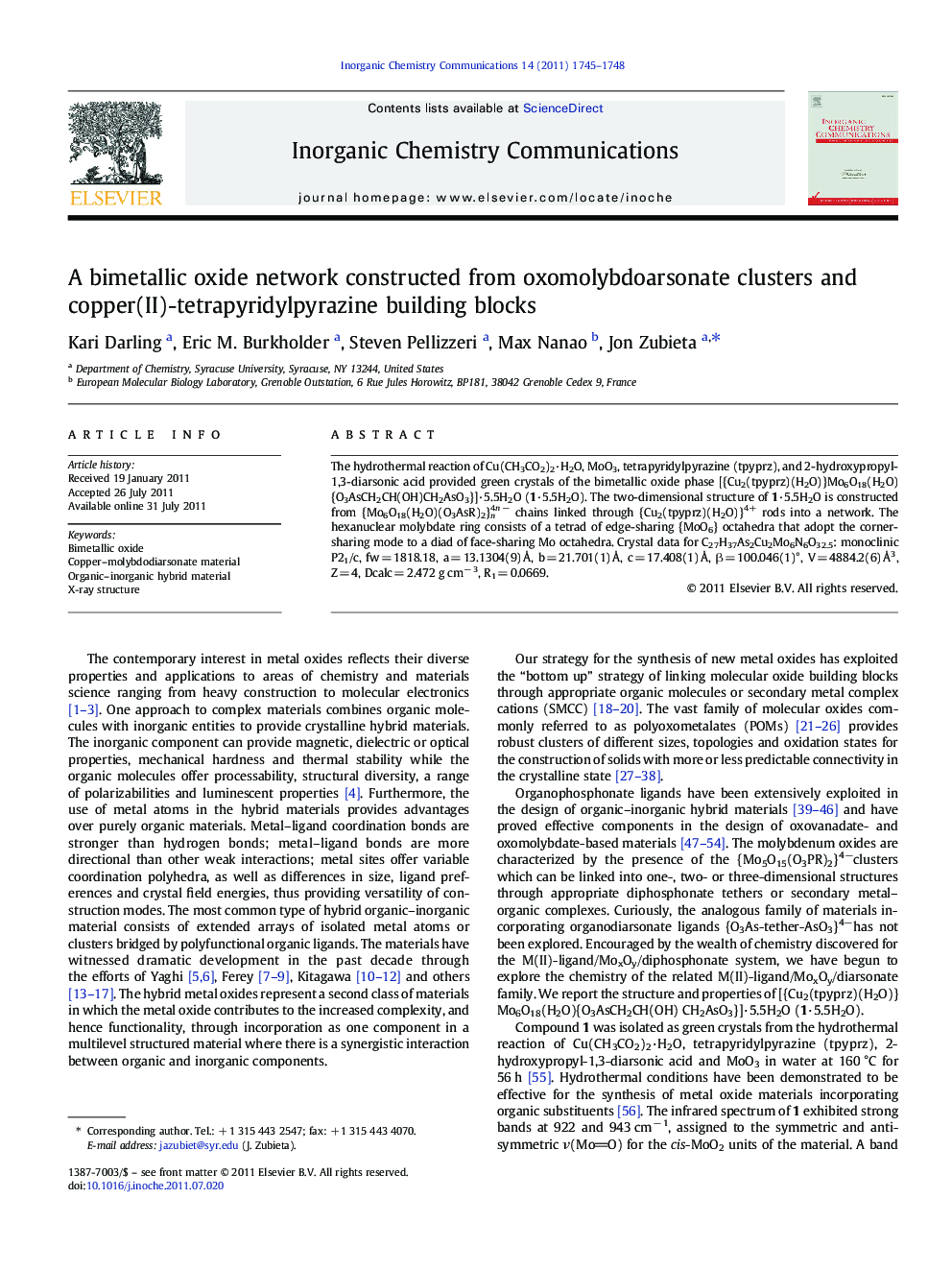| Article ID | Journal | Published Year | Pages | File Type |
|---|---|---|---|---|
| 1304162 | Inorganic Chemistry Communications | 2011 | 4 Pages |
The hydrothermal reaction of Cu(CH3CO2)2·H2O, MoO3, tetrapyridylpyrazine (tpyprz), and 2-hydroxypropyl-1,3-diarsonic acid provided green crystals of the bimetallic oxide phase [{Cu2(tpyprz)(H2O)}Mo6O18(H2O){O3AsCH2CH(OH)CH2AsO3}]·5.5H2O (1·5.5H2O). The two-dimensional structure of 1·5.5H2O is constructed from {Mo6O18(H2O)(O3AsR)2}n4n − chains linked through {Cu2(tpyprz)(H2O)}4+ rods into a network. The hexanuclear molybdate ring consists of a tetrad of edge-sharing {MoO6} octahedra that adopt the corner-sharing mode to a diad of face-sharing Mo octahedra. Crystal data for C27H37As2Cu2Mo6N6O32.5: monoclinic P21/c, fw = 1818.18, a = 13.1304(9) Å, b = 21.701(1) Å, c = 17.408(1) Å, β = 100.046(1)°, V = 4884.2(6) Å3, Z = 4, Dcalc = 2.472 g cm− 3, R1 = 0.0669.
Graphical abstractHydrothermal chemistry was used to prepare [{Cu2(tpyprz)(H2O)} Mo6O18(H2O){O3AsCH2CH(OH)CH2AsO3}]·5.5H2O, a two-dimensional material constructed from molybdoarsonate chains linked through {Cu2(tpyprz)(H2O)}4+ rods.Figure optionsDownload full-size imageDownload as PowerPoint slideHighlights► Self-assembly of a two-dimensional bimetallic network. ► Embedding of hydrated hexanuclear molybdoarsonate clusters. ► Selective intercalation of alcohols by dehydrated material.
